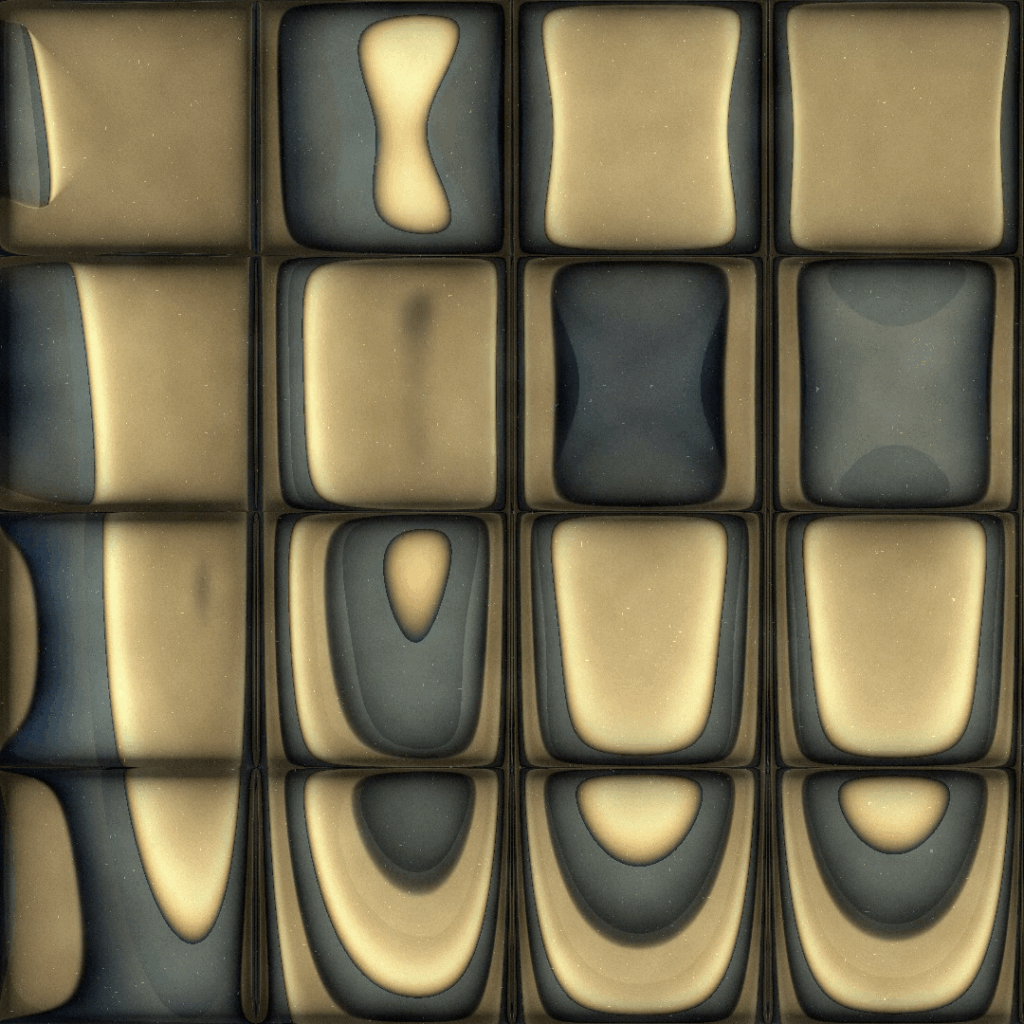
Sliced Time explores the concept of Phasing. Borrowing from contemporary music, where a repeated motif is played with slightly offset timing to create new sonic textures, this work applies a similar principle to animated surfaces. Here, surfaces are generated with varying phases across their grid cells, resulting in the emergence of new visual patterns.
This long-form generative collection on Bitcoin dynamically reacts to blockchain data. The time difference between consecutive mined blocks directly influences the Phasing effect.
A minimal GUI displays real-time blockchain data and offers different visualization modes.
Note from The Edit, Editor Hugo Pouchard – Issue #2
Sliced Time by Andrea Belloni
An exploration of temporal perception
I’ve been following Andrea Belloni’s (@Waterflowing0) work for about two years, and he never ceases to amaze me with his incredible and sometimes psychedelic motions. In some ways, his work reminds me of another artist I love: Alexis André (@mactuitui). Andrea is an Italian physicist and generative artist, and I’m gladly presenting his upcoming series “Sliced Time,” a series that delves into the multifaceted nature of temporal perception. Inspired by the Genuary 2025 Day 19 prompt “Op Art,” Andrea envisions a grid-like window where each pane displays a distorted scene, each representing time flowing at different phases. This real-time animation is crafted using JavaScript WebGL and GLSL Shader Language, showcasing Belloni’s expertise in blending scientific principles with artistic expression . Andrea’s background in physics, particularly his fascination with complex systems, chaos theory, and fractals, informs his artistic approach. His work often explores the intersection of art and science, creating pieces that are both visually captivating and intellectually stimulating.









